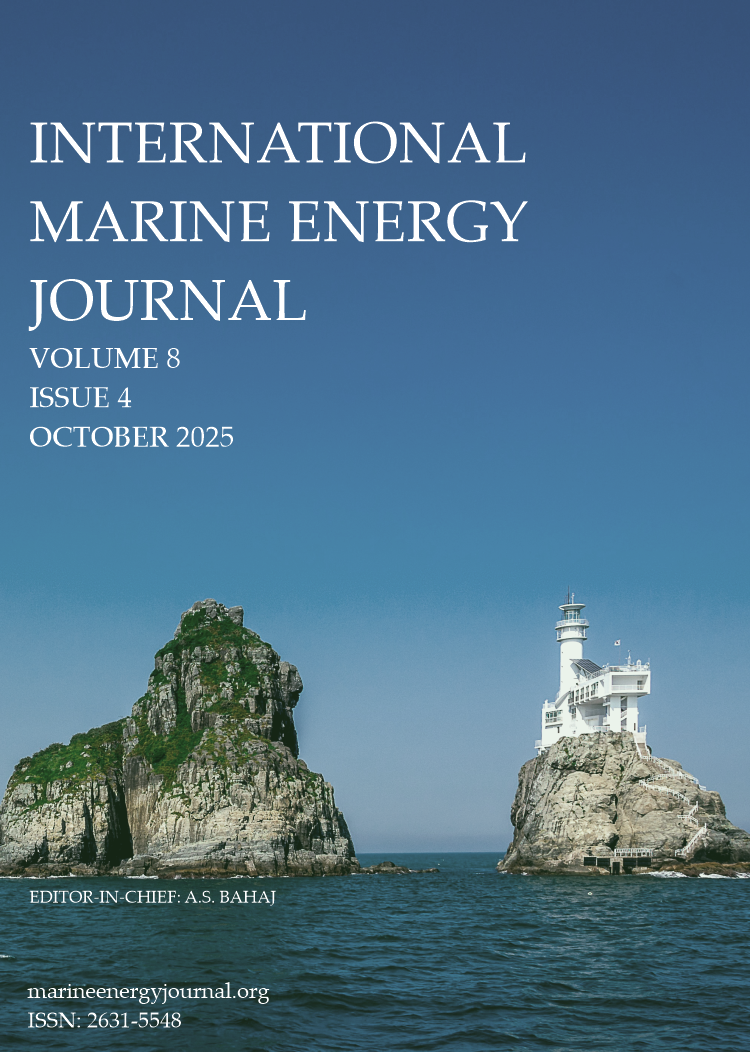Numerical and Experimental Investigation of Float Shape Effects on Single-Heaving Wave Energy Converter Performance
DOI:
https://doi.org/10.36688/imej.8.395-405Keywords:
Hemisphere float, Float geometry, Radiation damping, Wave energy converterAbstract
This study presents a geometric design procedure for the buoy of a single-body wave energy converter (WEC) based on specific incident wave characteristics, utilizing both numerical and experimental analyses. It explores how float shape influences hydrodynamic performance and the power absorption through a single degree of freedom in heave motion. To compare the dynamics of different floats under identical conditions, specific criteria were established. Using ANSYS AQWA for numerical modelling, two new float shapes (an asymmetric cylindrical wedge, HW, and an axisymmetric cone, CH) were designed to match the natural frequency and mass of a conventional hemispherical bottom (HB) float. Once these requirements were met, HW and CH floats were manufactured for further experimental analysis. The study investigates how variations in float shape, notably the slope of the model surface at the waterline, affect hydrodynamic parameters, response and subsequently impact WEC model power absorption. Results highlight the importance of radiation damping on power absorption and emphasize the need to select appropriate power take-off (PTO) damping. Moreover, selecting the optimal float shape and PTO damping can significantly enhance the power absorption.
Downloads
Published
How to Cite
Issue
Section
License
Copyright (c) 2025 Reza Abbasi, James Harris, Lachlan Stedman, Tom E Baldock

This work is licensed under a Creative Commons Attribution 4.0 International License.
I the author/we the authors understand that I/we retain copyright over our article. I/we grant a licence to IMEJ to: publish my/our article under the terms of the Creative Commons Attribution (CC BY) License which permits use, distribution and reproduction in any medium, provided the original work is properly cited, and identify IMEJ as the original publisher.


